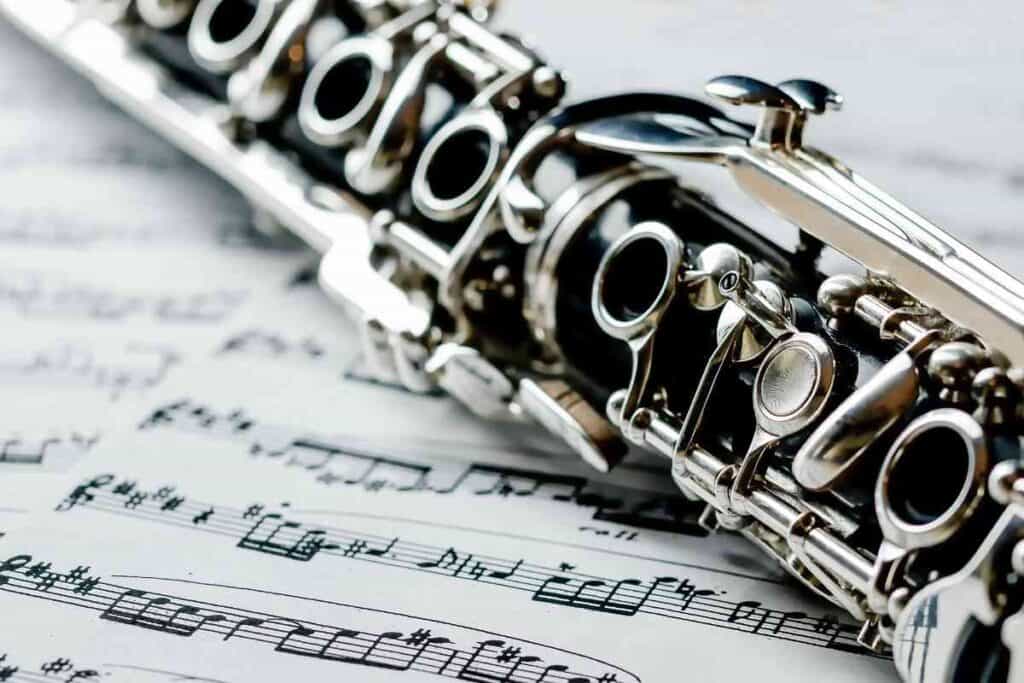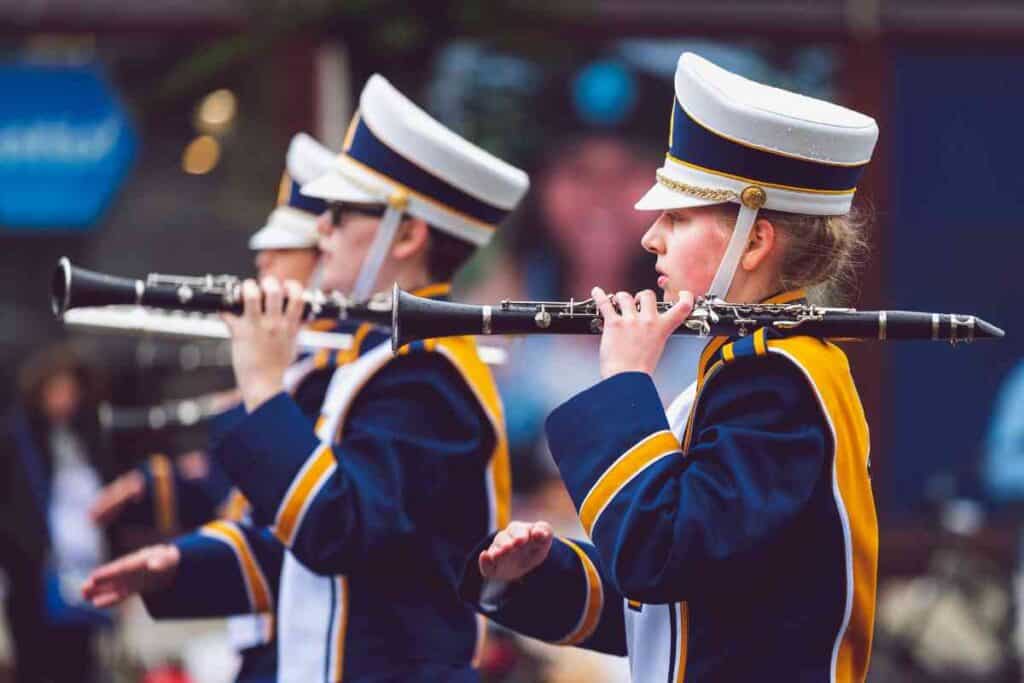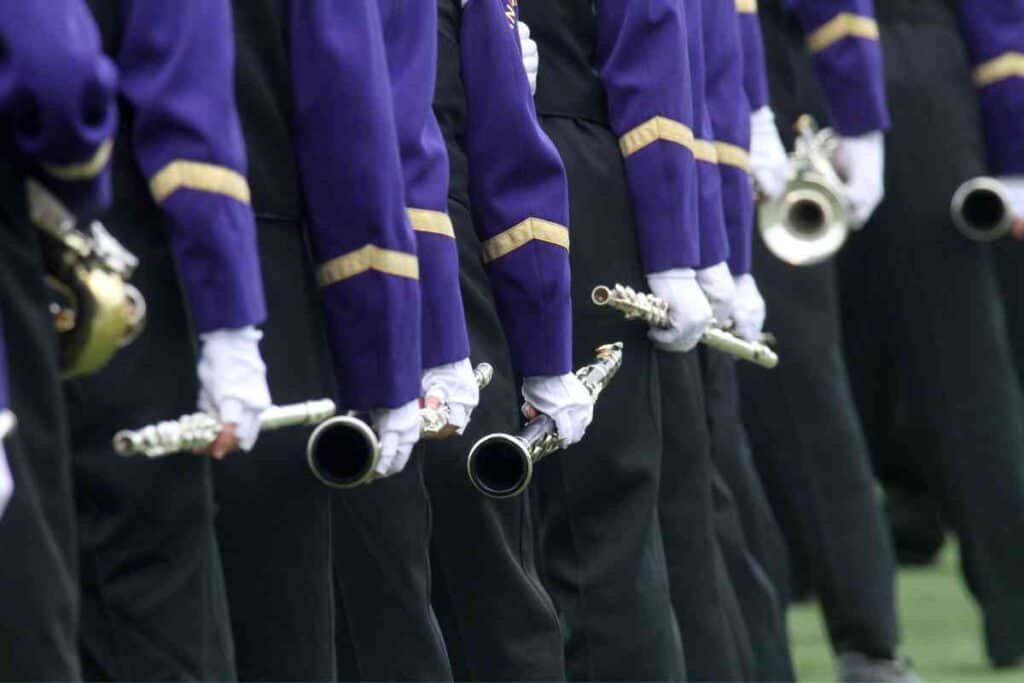Making Music: Are Clarinets Included In College Marching Bands?
College marching bands have lots of different musical instruments included in their makeup. But do college marching bands have clarinets?

Are clarinets in college marching bands?
The musical makeup of each band’s performance differs, but for the most part, most bands include clarinets in the performance and presentation. Clarinets are a common woodwind instrument and are frequently included in marching band music.
As a former marching band member, I can attest to the fact the clarinets are played in marching bands. Bands frequently use clarinets, while some marching bands do not.
The clarinet adds a unique sound to the band that often goes missed when marching bands don’t support the clarinet.
What Is A Marching Band?
A marching band is a musical ensemble that typically performs while marching in a certain order. A marching band usually performs in a parade or at half time during a football game.
Synchronized marching usually provides audiences a colorful performance that enhances the ambience during a sporting event. Marching bands are tracked back to military marching bands which were used to provide music during military marches and ceremonies.
Marching bands include music, marching, and the color guard. A college marching band plays a wide array of music ranging from old military songs to popular, modern day music.

To add a visual component to the music, the marching band and band directors use the color guard.
The color guard uses flags, rifles, and sabres to enhance the musical performance. Being a member of a marching band is a challenging and rewarding experience.
A member of the marching band must not only be a good musician, but also have the physical endurance and coordination to march in a certain order.
Teamwork is also a crucial part of being a member of a marching band. Marching bands must be synchronized, forcing the team member to be highly involved in team work. Musical marching bands have captured the minds and hearts of their audiences through their use of vibrant music and intricate marching routines.
Marching in a band, especially in the drum corps, is a true celebration of music and teamwork.
Woodwinds
The woodwind section of a marching band usually consists of flutes, clarinets, saxophones, and piccolos.
These instruments produce a wide range of sounds and are an important part of the marching band sound.
The following are the woodwind sections of a marching band.
- Flutes: The flute is a popular woodwind instrument in marching bands, providing a bright and soaring sound. Flutes in marching bands are usually played while marching and are designed to be lightweight and portable.
- Clarinets: Clarinets are a common woodwind instrument in marching bands, and they play an important role in creating a full and rich sound. Marching clarinets are often designed to be more compact than concert clarinets and are easier to play while marching.
- Saxophones: Saxophones are a staple of marching bands, providing a powerful and soulful sound. Marching saxophones are typically smaller and more lightweight than concert saxophones, making them easier to play while marching.
- Piccolos: The piccolo is a high-pitched woodwind instrument that is often used in marching bands to provide a bright and piercing sound. Piccolos in marching bands are typically played while marching and are designed to be lightweight and portable.

These woodwind sounds produce a wide range of noises that allow the marching band to play lots of different songs.
The marching band clarinet also falls into the woodwinds section and helps accompany other parts of the band such as the drum and bugle corps. Marching band clarinets are a very important part of the marching band in total, not just a great addition to the woodwind band members.
Woodwind sections are truly exceptional, adding a rich and diverse range of sounds to marching band performances and elevating the overall musical experience.
If you are interested in marching band, please consider the woodwinds as your marching band path.
Why Do Some Marching Bands Not Have Clarinets?
Some marching bands may not choose to have clarinets in their performance for a number of reasons.

One reason a high school marching band may not have a clarinet is instrumentation style.
Some marching bands may have different instrumentation styles, for example, some marching bands may focus more on brass instruments while others focus on percussion.
The next reason a concert band may not have clarinets is space limitations in the marching band.
Clarinets are very large instruments and for a concert band that plays inside, clarinets can be difficult to carry while marching.
High school bands may not have clarinets because of logistics. Marching bands typically carry all of their equipment with them.
And the transporting of clarinets for a marching band may be difficult. Bands that do not have enough transportation and storage for clarinets may cut clarinets allowing more space for other instruments, such as percussion instruments.
Lastly, the reason the band director may choose not to include clarinets in their display is because of difficulty level.
The clarinet is a difficult instrument to play, and its band might not have enough skilled clarinet players to make a difference.
These are the reasons a marching band director or a concert band may not include a clarinet in their performance.
Different Types of Wooden Clarinet
There’s a couple different types of clarinets you can choose to play in marching band during marching season. Not all clarinets are equal, and each have their own unique take on the woodwind sound. The woodwind sound can range and meet many different notes.
- B-flat clarinet: This is the most common type of clarinet and is typically used in classical, jazz, and marching bands.
- A clarinet: This type of clarinet is pitched a half-step higher than the B-flat clarinet and is often used in orchestral music.
- Bass clarinet: The bass clarinet is a larger, deeper-pitched clarinet that is used to play lower parts in orchestral music.
- Alto clarinet: The alto clarinet is a smaller, higher-pitched clarinet that is used in some orchestral music and in some jazz ensembles.
- Contra-alto clarinet: The contra-alto clarinet is a larger, deeper-pitched clarinet that is used in some orchestral music and in some wind ensembles.
- Contra-bass clarinet: The contra-bass clarinet is the largest and deepest-pitched clarinet, and it is used in some orchestral music and in some wind ensembles.
The previous list is a list of all the different types of clarinets.
In addition to these types of clarinets, there are also variations of each type, such as the B-flat soprano clarinet and the E-flat clarinet.
The specific type of clarinet used can vary depending on the music being performed and the type of ensemble.
Key Takeaways
- Most bands include clarinets in the performance and presentation.
- Clarinets are a common woodwind instrument.
- Marching bands are tracked back to military marching bands.
- The woodwinds section includes flutes, clarinets, saxophones, and piccolos.
- The color guard uses flags, rifles, and sabres to enhance the musical performance.
